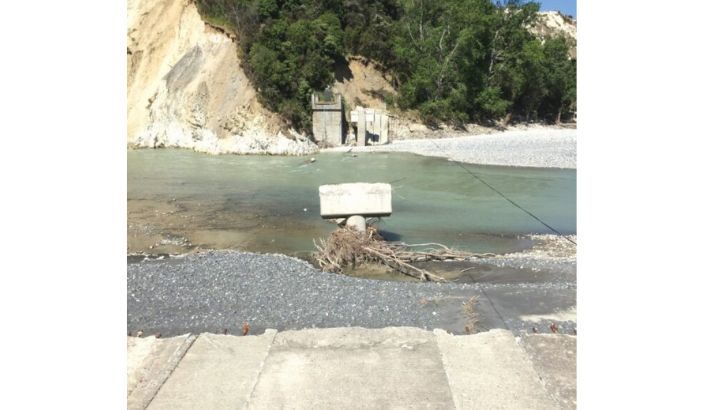World War II-type bridge considered for Clarence Valley repair work


The remains of the Glen Alton bridge in the Clarence Valley, north of Kaikoura. Photo: Supplied/ Kaikōura District Council.
David Hill, Local Democracy Reporter
A bailey bridge is one option being considered to give Clarence Valley residents more reliable road access.
Developed during World War II, bailey bridges are commonly used as temporary structures or for emergency situations.
Kaikōura District Council chief executive Will Doughty said a range of options are being considered, following Waka Kotahi NZ Transport Agency’s (NZTA) decision last month not to extend a sunset clause on funding for a replacement bridge on the Waiau Toa Clarence River, north of Kaikōura.
Mr Doughty said the council has previously considered a bailey bridge as a temporary solution, but the cost blew out to $2m when it became clear steel abutments would be needed.
‘‘The stream has changed, so we will relook at that. The elected members are keen to see what is the best bang for buck.’’
The Glen Alton bridge was destroyed in the 7.8 magnitude earthquake in 2016.
The NZTA board approved emergency works funding of $12.6m from the National Land Transport Programme in 2019 to replace the bridge - a 95 percent subsidy.
But the project has been beset by delays, leading to NZTA’s funding being withdrawn and leaving landowners high and dry.
The council has left the local share of $500,000 in the 2025/26 annual plan budget.
Mr Doughty said property owners have not given up on the goal of a replacement bridge over the Waiau Toa Clarence River.
The cost of the building a new bridge is now estimated to cost $16.5m and the council would need to acquire land for an access road and a resource consent from Environment Canterbury.
The previous road access was taken out by the earthquake. ‘‘The indications are a consent might only be valid for five years, so we would need to look at what is the likelihood of getting the funding within that timeframe,’’ Mr Doughty said.
The Clarence Valley is home to several properties, including forestry blocks, large hill country properties and Department of Conservation land.
For now access in and out is via Waipapa Road, Wharekiri Stream and a paper road through several properties.
But the Wharekiri Stream is prone to flooding in heavy rain events and can be impassable for up to two weeks. Access is by four-wheel-drive only.
Mr Doughty said the cost of installing a bailey bridge on the Wharekiri Stream would depend on the size of the bridge and how long it was needed for.
Bailey bridges were typically hired, rather than being a permanent structure, and could cost upwards of $30,000 a year for a single span bridge.
It was unclear how any solution would be paid for or whether property owners would be asked to contribute.
‘‘No conversations have been had with landowners about contributing,’’ Mr Doughty said. ‘‘It is too early to say, but we’ve got to look at all options.”
LDR is local body journalism co-funded by RNZ and NZ On Air.

